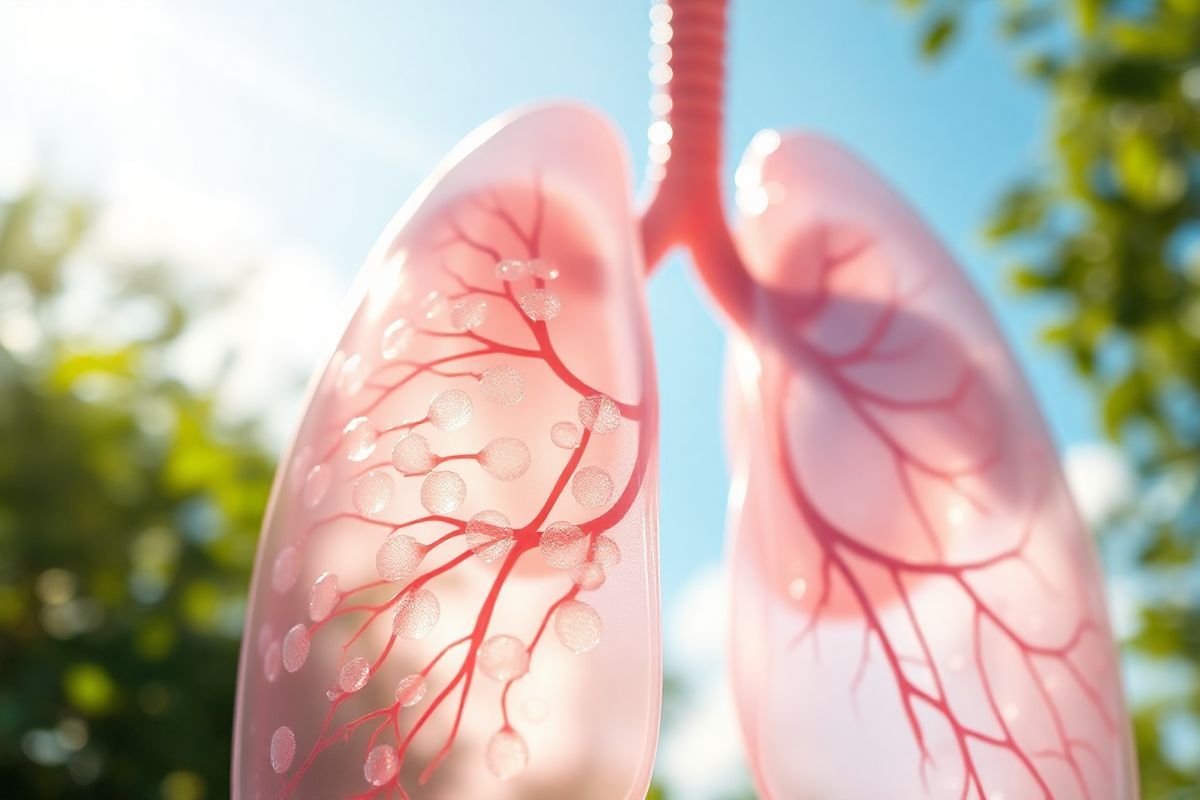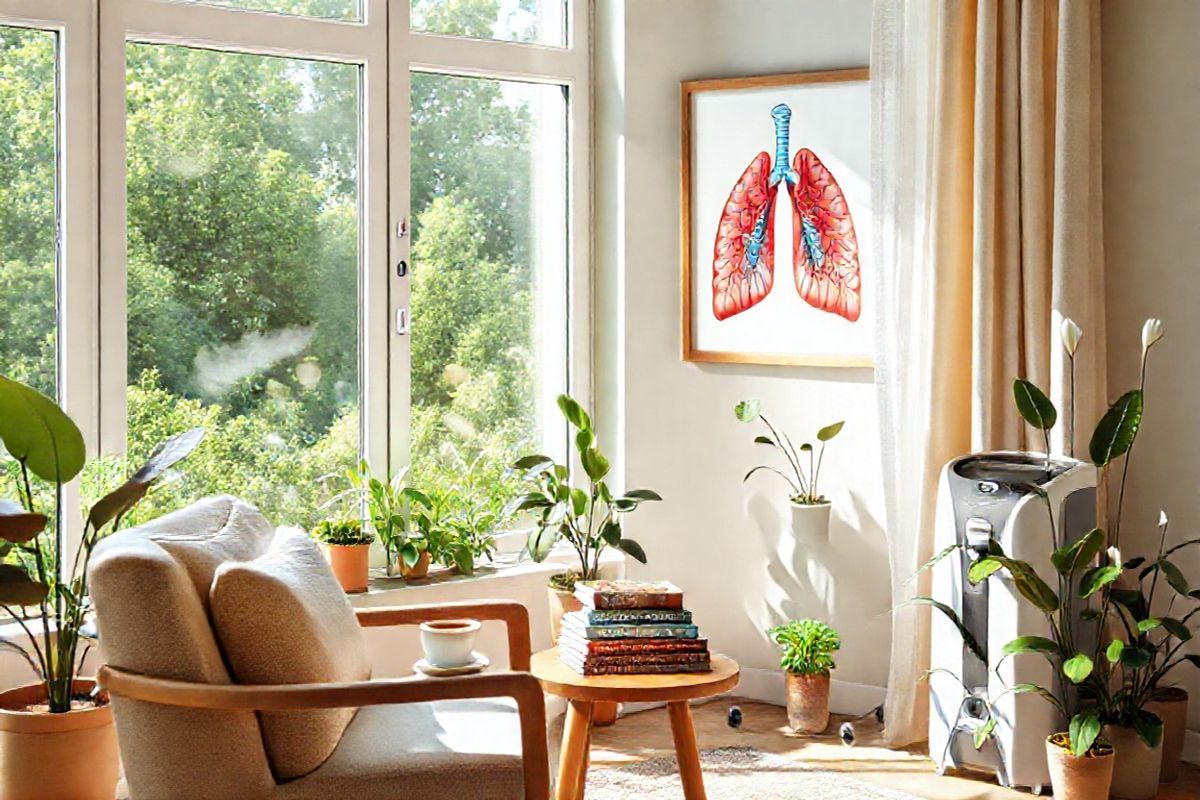Table of Contents
What is Bullous Emphysema? Exploring Its Definition and Mechanisms

Bullous emphysema is a subtype of emphysema, a chronic obstructive pulmonary disease (copd) characterized by the presence of large air spaces (bullae) that form in the lungs due to the destruction of alveolar walls. These bullae are created when the small air sacs in the lungs become damaged and lose their elasticity. The accumulation of air in these large spaces can lead to significant breathing difficulties as they can interfere with the normal function of surrounding lung tissue.
The primary mechanism behind bullous emphysema involves a combination of factors, including inflammation, oxidative stress, and protease-antiprotease imbalance. Tobacco smoke is the most common cause of emphysema, leading to chronic inflammation and damage to lung tissue. Over time, this damage results in the formation of bullae, which can cause a reduction in the surface area available for gas exchange, leading to hypoxemia (low blood oxygen levels) and hypercapnia (elevated carbon dioxide levels) (CDC, n.d.).
Key Causes and Risk Factors for Developing Bullous Emphysema

The development of bullous emphysema is influenced by several risk factors, the most significant of which include:
-
Tobacco Smoke: Approximately 70% of COPD cases in high-income countries are attributed to smoking (WHO, n.d.). Smoking not only contributes to the inflammation and destruction of lung tissue but also exacerbates oxidative stress, which accelerates airway damage.
-
Environmental Exposure: Exposure to secondhand smoke, industrial pollutants, and occupational hazards such as dust and fumes can increase the risk of developing COPD (Cleveland Clinic, n.d.).
-
Genetic Factors: Alpha-1 antitrypsin deficiency is a rare genetic disorder that can lead to early-onset emphysema. Individuals with this condition lack a protein that protects the lungs from damage, making them more susceptible to COPD (Mayo Clinic, n.d.).
-
Age: The risk of developing bullous emphysema increases with age, as lung function naturally declines over time. Most people with COPD are diagnosed in their mid-life or older (NHS, n.d.).
-
Chronic Respiratory Conditions: A history of asthma or other chronic respiratory diseases can predispose individuals to develop emphysema and its complications (Cleveland Clinic, n.d.).
Recognizing the Symptoms: How Bullous Emphysema Differs from Other Forms of COPD
The symptoms of bullous emphysema can be similar to other forms of COPD, but there are distinctive features. Common symptoms include:
-
Shortness of Breath: This is often the most prominent symptom, particularly during physical activity, and may worsen over time.
-
Chronic Cough: Patients may experience a persistent cough, often accompanied by sputum production.
-
Wheezing: The presence of wheezing due to narrowed airways is common.
-
Fatigue: Individuals may feel increasingly tired due to the effort required to breathe.
-
Barrel Chest: The chest may become barrel-shaped due to overinflated lungs.
In contrast to other forms of emphysema, such as centrilobular emphysema, which primarily affects the upper lobes of the lungs, bullous emphysema can lead to significant lung volume loss and respiratory failure if left untreated (CDC, n.d.).
TablSymptoms of Bullous Emphysema
| Symptom | Description |
|---|---|
| Shortness of Breath | Difficulty breathing, especially during exertion |
| Chronic Cough | Persistent cough with or without sputum |
| Wheezing | High-pitched sound during breathing |
| Fatigue | Increased tiredness due to breathing effort |
| Barrel Chest | Increased anterior-posterior chest diameter |
Effective Treatment Strategies for Bullous Emphysema: From Medications to Surgical Options
While there is currently no cure for bullous emphysema, various treatment strategies can help manage symptoms and enhance the quality of life for patients. Treatment is typically tailored to the severity of the disease and may include:
1. Medications
-
Bronchodilators: These medications relax the muscles around the airways, making breathing easier. They are available in short-acting (e.g., albuterol) and long-acting formulations (e.g., tiotropium) (NHS, n.d.).
-
Inhaled Corticosteroids: Used to reduce airway inflammation, these medications can help prevent exacerbations and improve lung function (Temple Health, n.d.).
-
Mucolytics: These medications help thin mucus, making it easier to expel from the lungs, which can be particularly beneficial for patients with chronic cough (NHS, n.d.).
-
Antibiotics: If a respiratory infection exacerbates symptoms, antibiotics may be prescribed to treat the infection (Mayo Clinic, n.d.).
2. Pulmonary Rehabilitation
Pulmonary rehabilitation programs combine exercise, education, and support to help patients manage their condition. These programs are designed to improve lung function, physical endurance, and overall health (Temple Health, n.d.).
3. Oxygen Therapy
For patients with low blood oxygen levels, supplemental oxygen may be necessary. This treatment can help alleviate shortness of breath and improve quality of life (Mayo Clinic, n.d.).
4. Surgery
In severe cases of bullous emphysema where symptoms are unmanageable with medications, surgical interventions may be considered:
-
Bullectomy: This procedure involves the removal of large bullae that obstruct normal breathing (NHS, n.d.).
-
Lung Volume Reduction Surgery: Damaged lung tissue is surgically removed to improve lung function (NHS, n.d.).
-
Lung Transplant: In select patients with advanced disease, a lung transplant may offer a new lease on life (Mayo Clinic, n.d.).
TablTreatment Options for Bullous Emphysema
| Treatment Type | Description |
|---|---|
| Medications | Bronchodilators, corticosteroids, mucolytics |
| Pulmonary Rehabilitation | Exercise and education programs |
| Oxygen Therapy | Supplemental oxygen for low oxygen levels |
| Surgery | Bullectomy, lung volume reduction, lung transplant |
Living with Bullous Emphysema: Lifestyle Changes and Management Tips for Better Quality of Life
Living with bullous emphysema requires significant lifestyle adjustments to manage symptoms effectively and maintain a good quality of life. Here are some practical tips:
-
Quit Smoking: This is the most critical step in slowing the progression of COPD. Support services and programs can assist in quitting (WHO, n.d.).
-
Stay Active: Regular, moderate exercise can enhance lung function and overall health. Activities such as walking or cycling are highly beneficial (NHS, n.d.).
-
Eat a Balanced Diet: Proper nutrition is essential for maintaining strength. Smaller, more frequent meals may be easier for patients who experience shortness of breath (Temple Health, n.d.).
-
Avoid Irritants: Patients should steer clear of smoke, dust, and pollutants to minimize exposure to lung irritants (WHO, n.d.).
-
Manage Stress: Techniques such as mindfulness, breathing exercises, and relaxation can help cope with the emotional aspects of living with a chronic illness (Mayo Clinic, n.d.).
FAQ Section
What is the difference between bullous emphysema and other types of emphysema?
Bullous emphysema is characterized by the formation of large air spaces (bullae) in the lungs, while other types, like centrilobular emphysema, primarily affect smaller airways and are often associated with smoking.
How is bullous emphysema diagnosed?
Diagnosis often involves a combination of medical history, physical examination, imaging tests (like chest X-rays or CT scans), and pulmonary function tests (spirometry) to assess lung function (CDC, n.d.).
Can bullous emphysema be cured?
Currently, there is no cure for bullous emphysema, but treatments can help manage symptoms and improve quality of life (NHS, n.d.).
What lifestyle changes can help manage bullous emphysema?
Quitting smoking, staying physically active, eating a balanced diet, and avoiding environmental pollutants are critical lifestyle changes that can help manage symptoms (WHO, n.d.).
References
- CDC. (n.d.). About COPD. Retrieved from https://www.cdc.gov/copd/about/index.html
- Cleveland Clinic. (n.d.). COPD: Causes, Symptoms, Diagnosis, Treatment & Prevention. Retrieved from https://my.clevelandclinic.org/health/diseases/8709-chronic-obstructive-pulmonary-disease-copd
- Mayo Clinic. (n.d.). Chronic obstructive pulmonary disease (COPD). Retrieved from https://www.mayoclinic.org/diseases-conditions/copd/diagnosis-treatment/drc-20353685
- NHS. (n.d.). Chronic obstructive pulmonary disease (COPD) - Treatment. Retrieved from https://www.nhs.uk/conditions/chronic-obstructive-pulmonary-disease-copd/treatment/
- Temple Health. (n.d.). COPD Treatment Options. Retrieved from https://www.templehealth.org/services/conditions/chronic-obstructive-pulmonary-disease-COPD/treatment-options
- WHO. (n.d.). Chronic obstructive pulmonary disease (COPD) copd)











